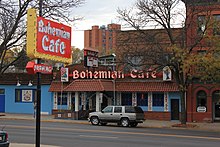
Wenceslaus I, Wenceslas I or Václav the Good was the Prince (kníže) of Bohemia from 921 until his death, probably in 935. According to the legend, he was assassinated by his younger brother, Boleslaus the Cruel.
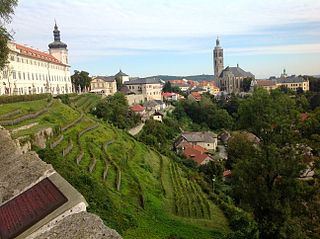
Kutná Hora is a town in the Central Bohemian Region of the Czech Republic. It has about 21,000 inhabitants. The centre of Kutná Hora, including the Sedlec Abbey and its ossuary, was designated a UNESCO World Heritage Site in 1995 because of its outstanding architecture and its influence on subsequent architectural developments in other Central European city centres. Since 1961, the town centre is also protected by law as an urban monument reservation, the fourth largest in the country.
South Omaha is a former city and current district of Omaha, Nebraska, United States. During its initial development phase the town's nickname was "The Magic City" because of the seemingly overnight growth, due to the rapid development of the Union Stockyards. Annexed by the City of Omaha in 1915, the community has numerous historical landmarks many are within the South Omaha Main Street Historic District.
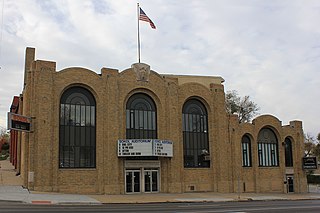
The Admiral Theatre is located at 2234 South 13th Street in the Little Bohemia neighborhood of South Omaha, Nebraska. It is a local icon for its historical context, as well as modern musical performances for rock and country music. It has a maximum capacity of 1,500. It was originally known as the Sokol Auditorium from 1926 to 2021.
North Omaha, Nebraska has a recorded history spanning over 200 years, pre-dating the rest of Omaha, encompassing wildcat banks, ethnic enclaves, race riots and social change. North Omaha has roots back to 1812 and the founding of Fort Lisa. It includes the Mormon settlement of Cutler's Park and Winter Quarters in 1846, a lynching before the turn of the twentieth century, the thriving 24th Street community of the 1920s, the bustling development of its African-American community through the 1950s, a series of riots in the 1960s, and redevelopment in the late 20th and early 21st century.
Little Italy is a neighborhood in Omaha, Nebraska which served as the historic home to Omahans of Italian ancestry. It was the source of many laborers for the Union Pacific railroad, much of Omaha's bootlegging during Prohibition and the Santa Lucia Procession, which started in 1924 and continues annually.
The Dahlman neighborhood is located south of downtown Omaha, Nebraska. One of the oldest neighborhoods in the city, it was originally platted in 1856. It was later named after "Cowboy" James Dahlman, an eight-term mayor of Omaha.
Sheelytown was a historic ethnic neighborhood in South Omaha, Nebraska, USA with populations of Irish, Polish and other first generation immigrants. Located north of the Union Stockyards, it was bounded by Edward Creighton Boulevard on the north, Vinton Street on the south, South 24th Street to the east, and 35th Street to the west. Sheelytown was named for the Sheely Brothers Packing Houses that were located in the area. Sheelytown was annexed by Omaha in 1887. The Omaha Quartermaster Depot was built just east of the community across the Union Pacific tracks.

The Prague Hotel is located at 1402 South 13th Street on the southwest corner of South 13th and William Streets in the heart of the Little Bohemia neighborhood of Omaha, Nebraska. Designed by Joseph Guth and built in 1898, this building was listed on the National Register of Historic Places in 1987.
Czechs in Omaha, Nebraska have made significant contributions to the political, social and cultural development of the city since the first immigrants arrived in 1868.
Poles in Omaha, Nebraska arrived relatively early in the city's history. The first Polish immigrants came in the 1870s, and the community grew past 1000 in the late 1890s. By the 1930s there were 10,000 of Polish descent, and Omaha claimed the largest such community of the Great Plains. According to the 2000 United States Census, Omaha had a total population of 390,112 residents, of whom 18,447 claimed Polish ancestry. The city's Polish community was historically based in several ethnic enclaves throughout South Omaha, including Little Poland and Sheelytown, first dominated by Irish immigrants.
Various ethnic groups in Omaha, Nebraska have lived in the city since its organization by Anglo-Americans in 1854. Native Americans of various nations lived in the Omaha territory for centuries before European arrival, and some stayed in the area. The city was founded by white Anglo-Saxon Protestants from neighboring Council Bluffs, Iowa. However, since the first settlement, substantial immigration from all of Europe, migration by African Americans from the Deep South and various ethnic groups from the Eastern United States, and new waves of more recent immigrants from Mexico and Africa have added layers of complexity to the workforce, culture, religious and social fabric of the city.

The Bohemian Cafe was located at 1406 South 13th Street in the historic Little Bohemia neighborhood of Omaha, Nebraska. Established in 1924, the cafe sat next to the Prague Hotel. Employees dressed in traditional Czech outfits since its early years, and a small cocktail lounge called the Bohemian Girl was adjoined to the restaurant; the interior decoration, similar to the rest of the building, included hand-painted folk-art pictures. Omaha native Conor Oberst, the lead singer of the rock act Bright Eyes, had been seen drinking at the bar before performing at the nearby Sokol Auditorium.

Baltimore East/South Clifton Park Historic District is a national historic district in Baltimore, Maryland, United States. It is primarily an urban residential area organized in a gridiron pattern. It comprises approximately 110 whole and partial blocks that formed the historic northeast corner of the City of Baltimore prior to 1888. While rowhouses dominate the urban area, the historic district also contains other property types which contribute to its character including brewing, meat packing, cigar manufacturing, printing, and a tobacco warehouse. The Baltimore Cemetery completes the historic district.
13th Street is a two-way street that runs south-north in Omaha, Nebraska. Historically significant areas along the street include Squatter's Row, Little Italy, Little Bohemia, and Mount Vernon Gardens.
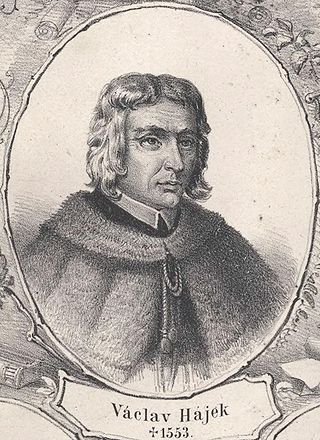
Wenceslaus Hájek of Libočany was a Bohemian chronicler. He was author of famous Czech Chronicle (1541), also called the Hájek's Chronicle. This work served as the main source of Czech historical and national consciousness until the end of the 18th century, when numerous errors and fabrications contained in it were recognized.

St. Wenceslaus Catholic Church is a Catholic parish church of the Archdiocese of Baltimore located in the Middle East neighborhood of Baltimore, Maryland. It is administered by the Josephites and serves a primarily African-American congregation.
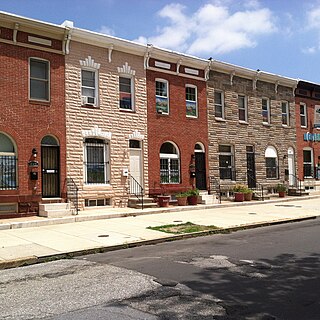
East Monument Historic District or Little Bohemia, is a national historic district in Baltimore, Maryland. It is a large residential area with a commercial strip along East Monument Street. It comprises approximately 88 whole and partial blocks. The residential area is composed primarily of rowhouses that were developed, beginning in the 1870s, as housing for Baltimore's growing Bohemian (Czech) immigrant community. During the late 19th and early 20th centuries the neighborhood was the heart of the Bohemian community in Baltimore. The Bohemian National Parish of the Roman Catholic Church, St. Wenceslaus, is located in the neighborhood. The historic district includes all of McElderry Park and Milton-Montford, most of Middle East and Madison-Eastend, and parts of Ellwood Park.
The history of Czechs in Baltimore dates back to the mid-19th century. Thousands of Czechs immigrated to East Baltimore during the late 19th and early 20th centuries, becoming an important component of Baltimore's ethnic and cultural heritage. The Czech community has founded a number of cultural institutions to preserve the city's Czech heritage, including a Roman Catholic church, a heritage association, a gymnastics association, an annual festival, a language school, and a cemetery. During the height of the Czech community in the late 19th century and early 20th century, Baltimore was home to 12,000 to 15,000 people of Czech birth or heritage. The population began to decline during the mid-to-late 20th century, as the community assimilated and aged, while many Czech Americans moved to the suburbs of Baltimore. By the 1980s and early 1990s, the former Czech community in East Baltimore had been almost entirely dispersed, though a few remnants of the city's Czech cultural legacy still remain.

